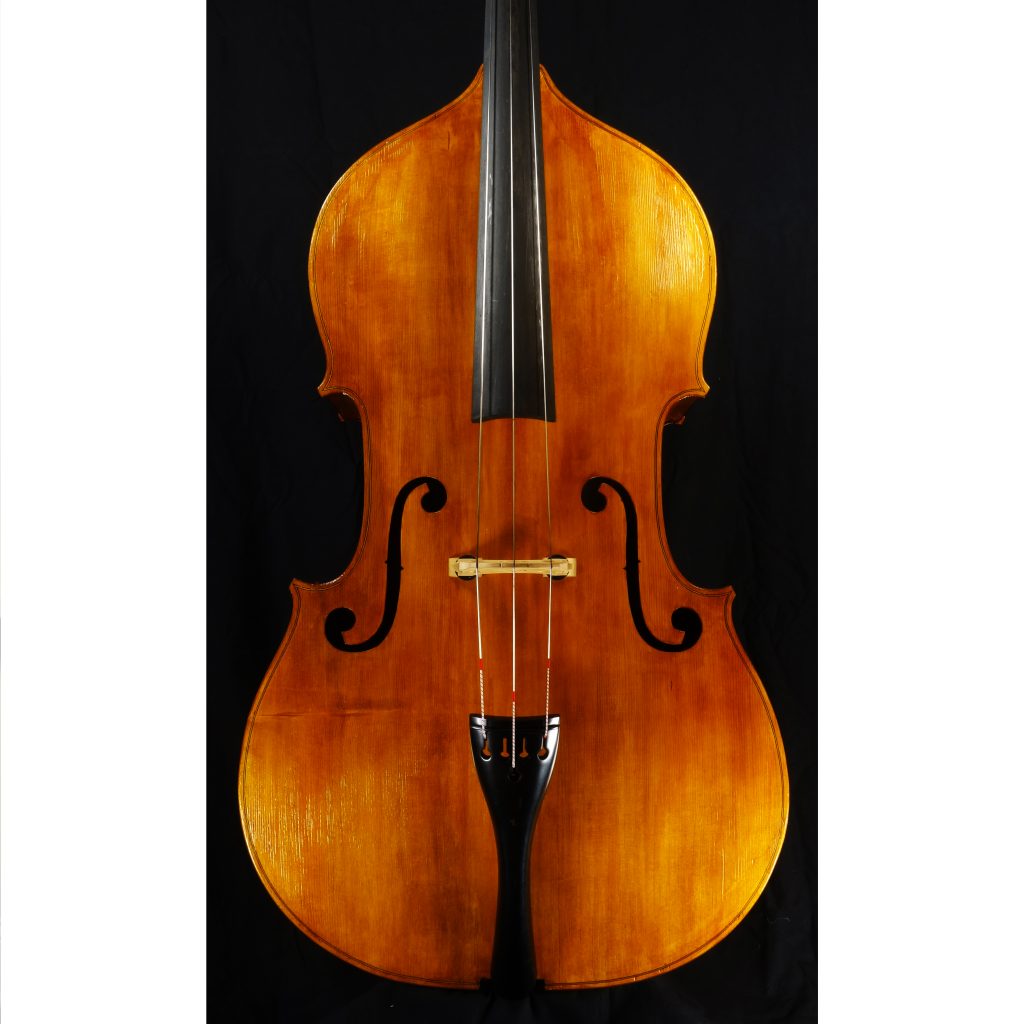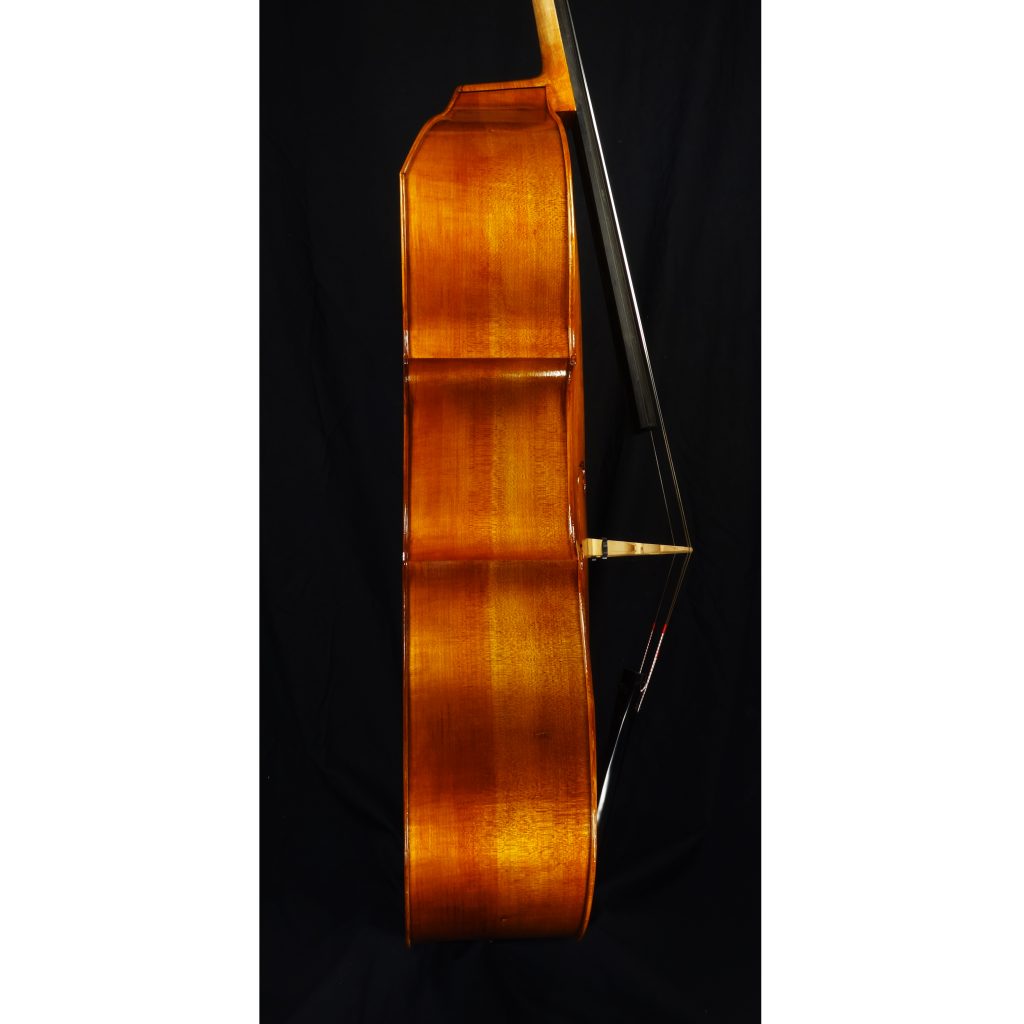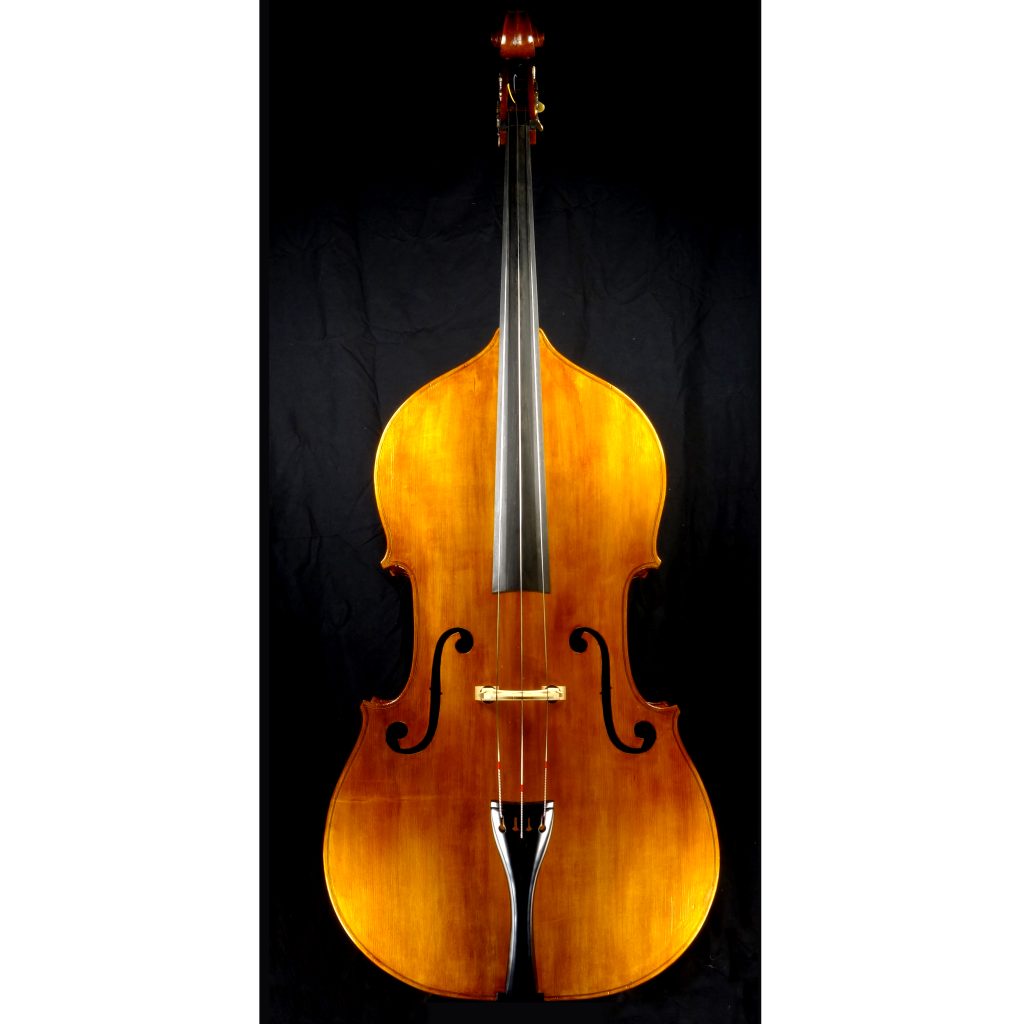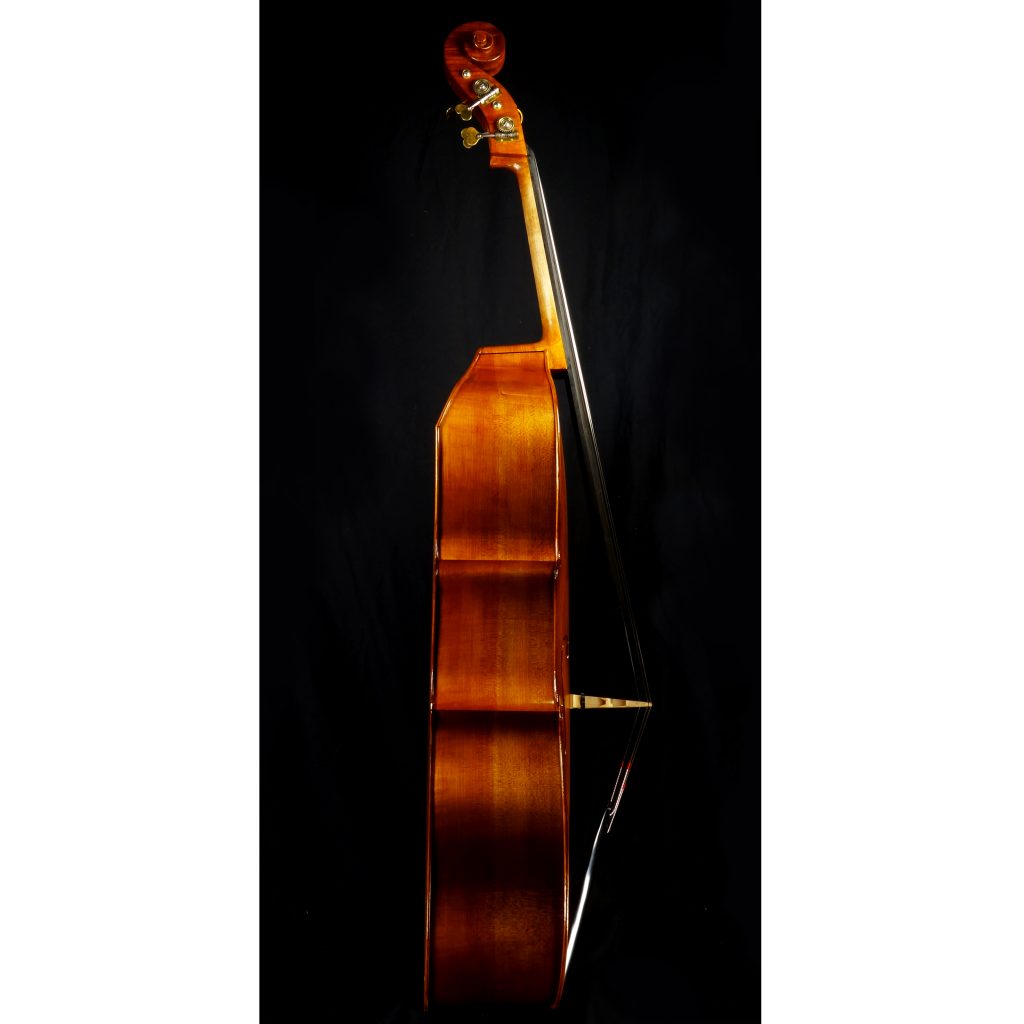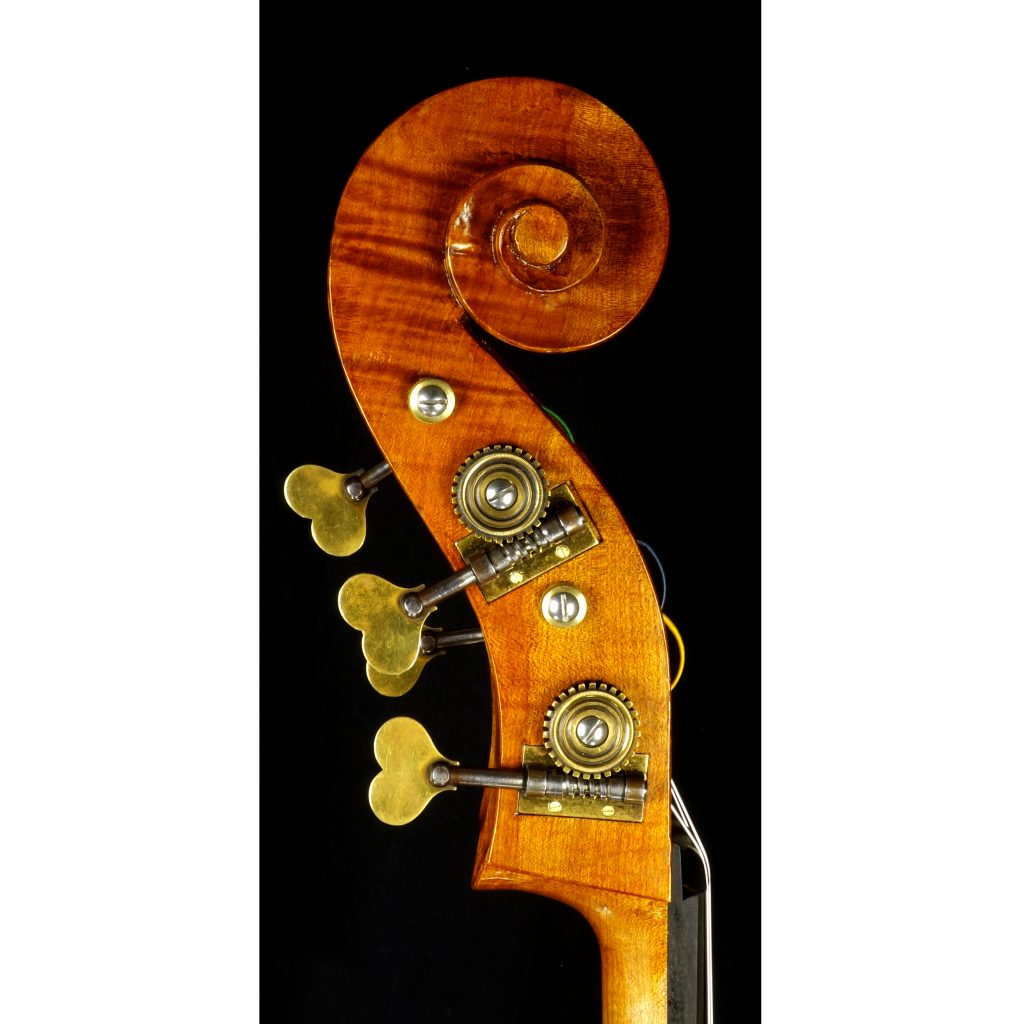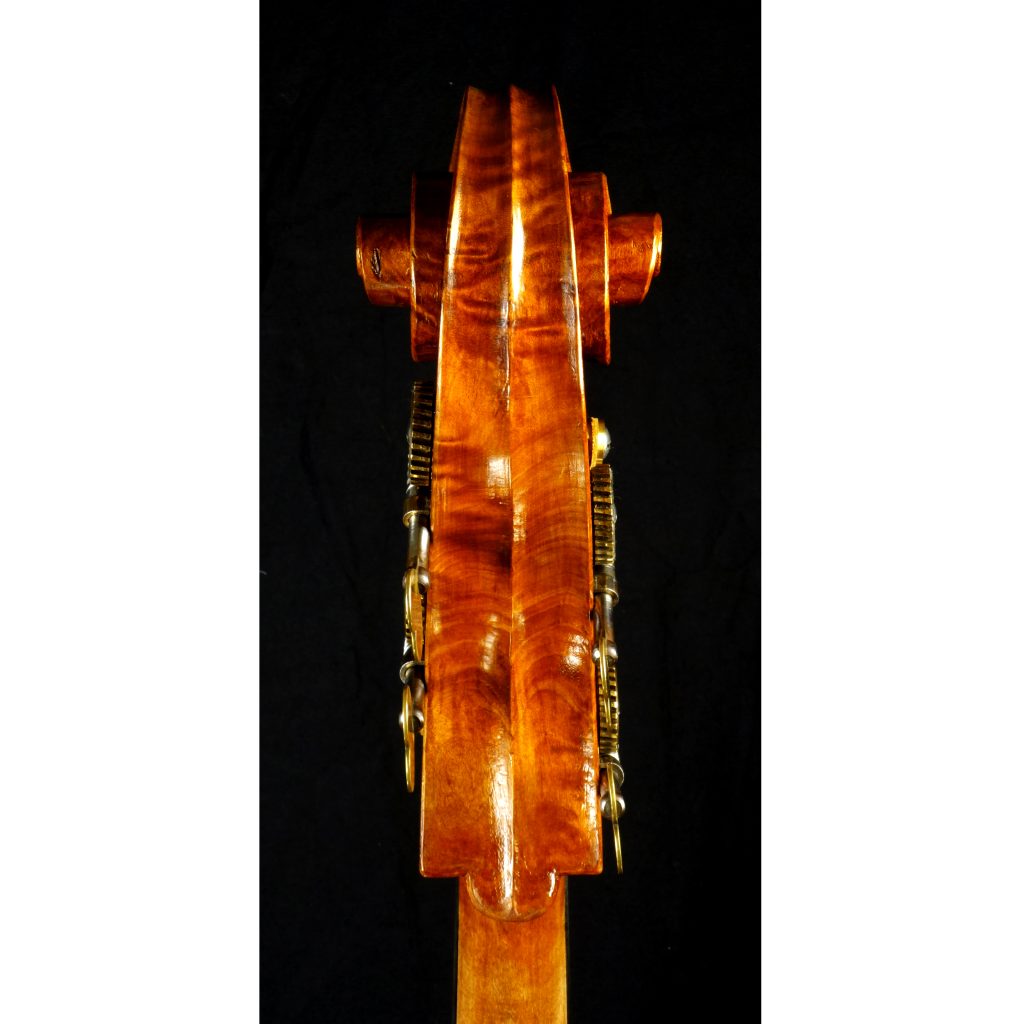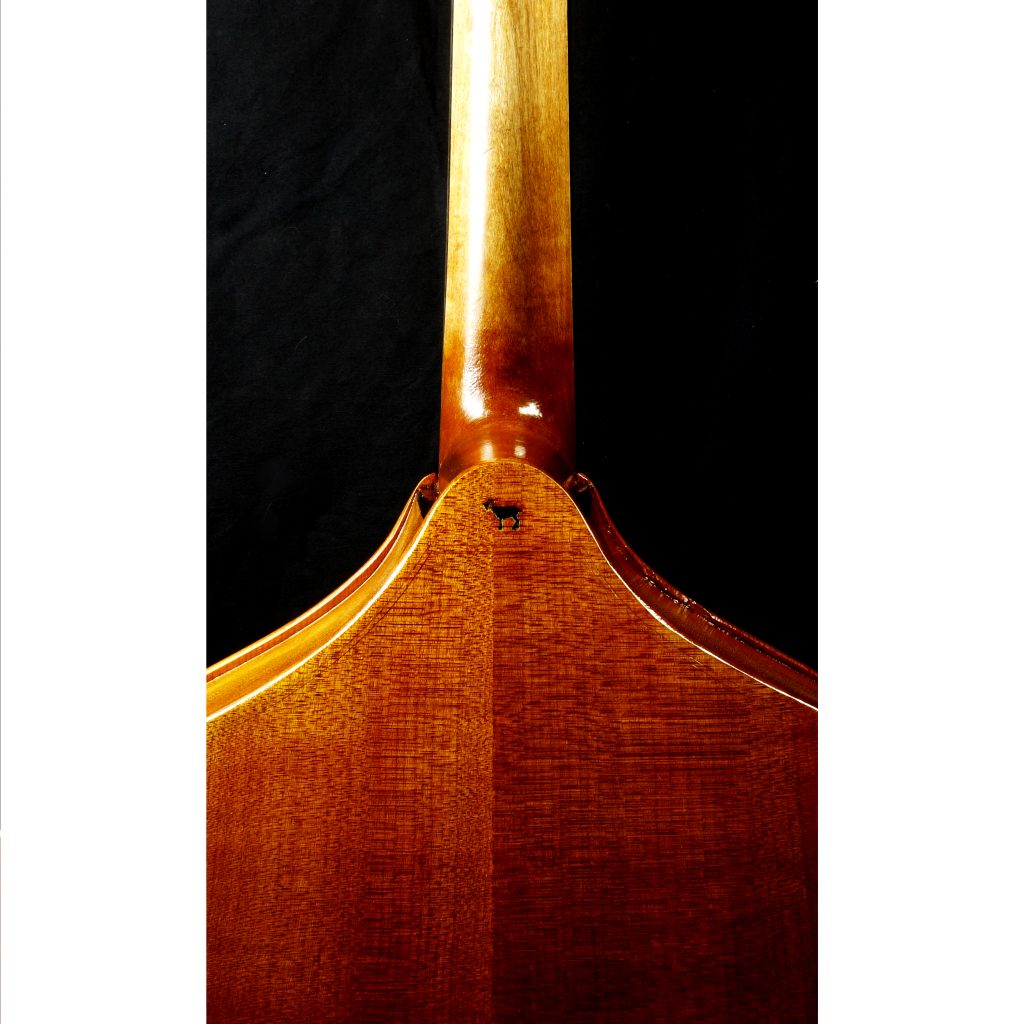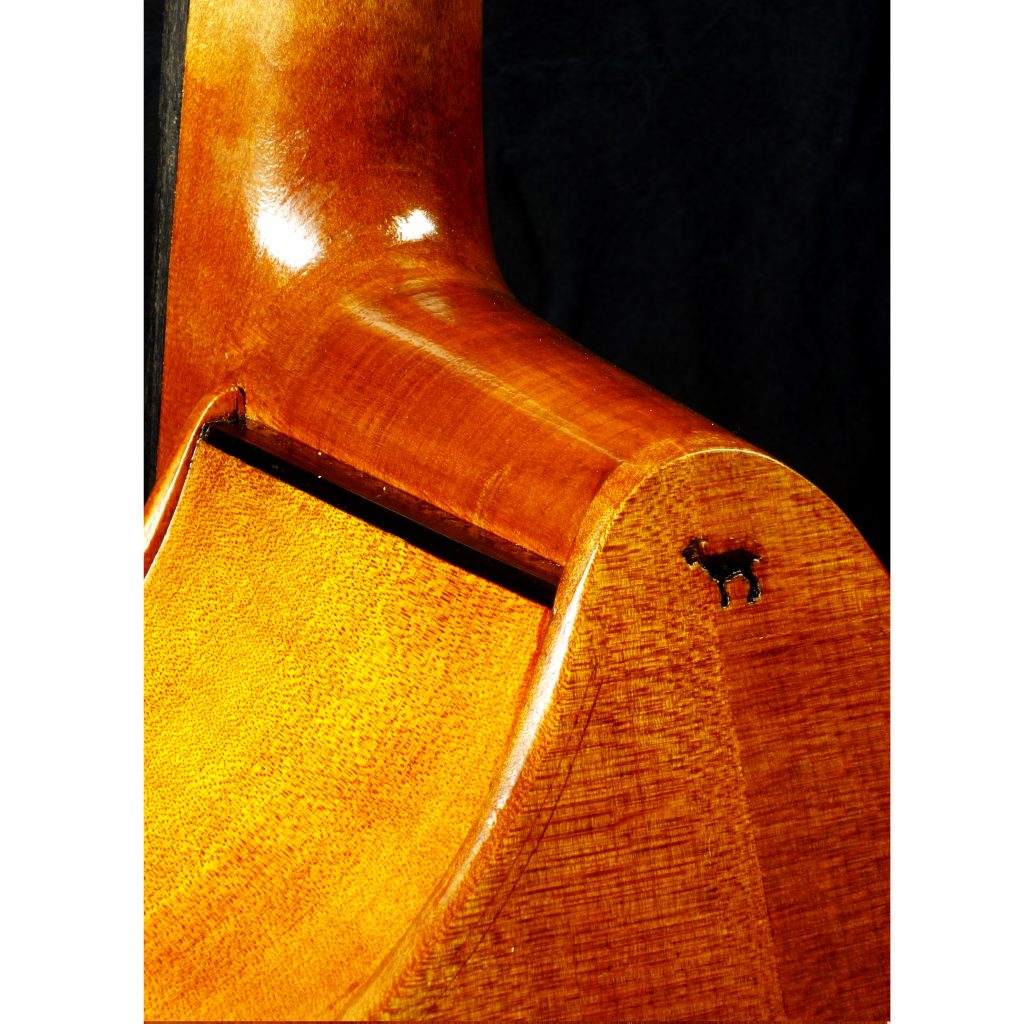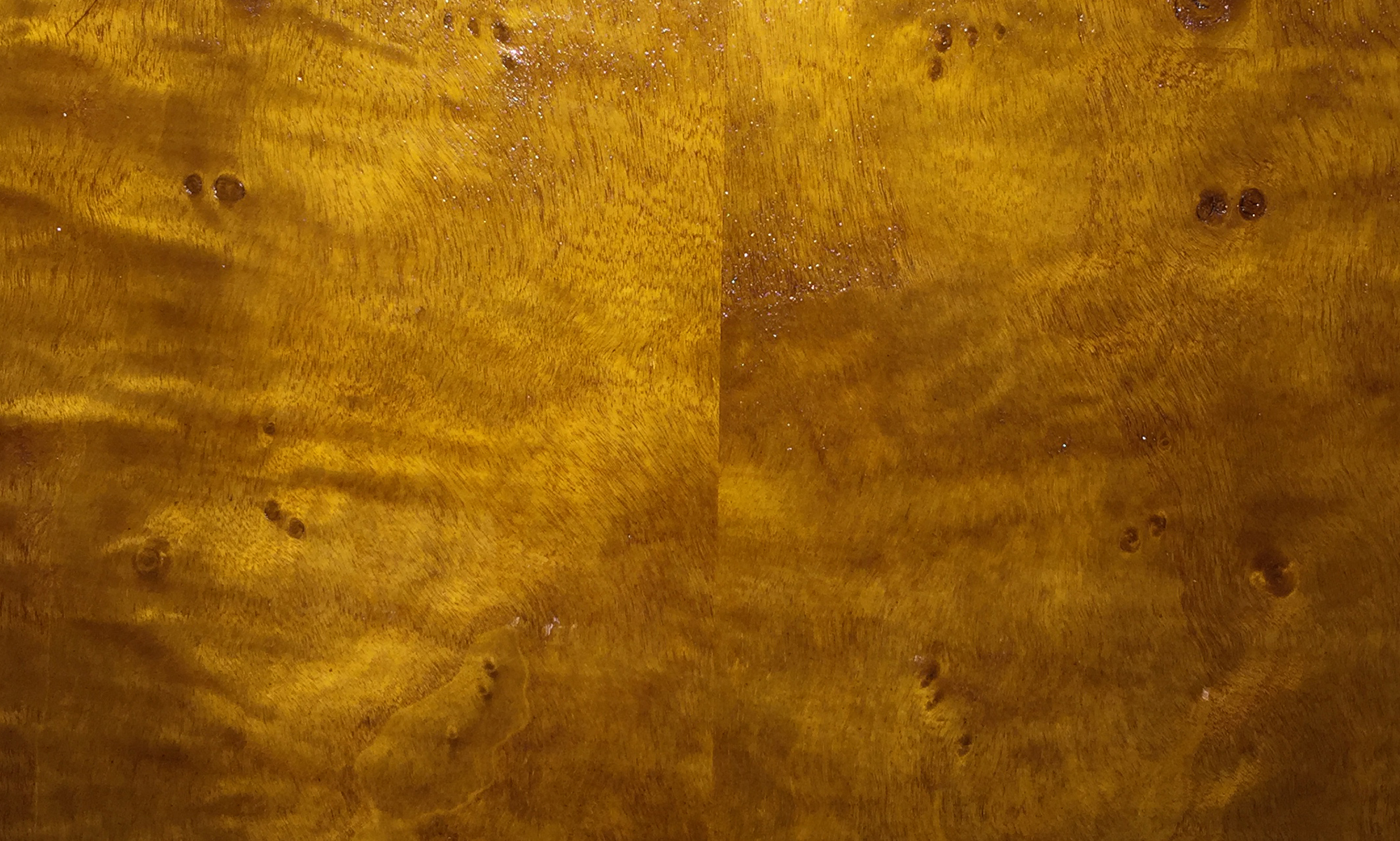
It is debatable if Giovanni Bottesini’s famed life-long partner, which now resides in a private collection in Japan, was made by Carlo Antonio or Paolo Antonio. In any event, the instrument survived a life on the road with the old master during the 19th-Century, through hardships we can only imagine. Giovanni Bottesini traveled throughout Europe and North- and South America while conducting and playing his virtuosic compositions for delighted opera audiences.
I had the good fortune to visit this instrument in November of 2024 with the permission of it’s gracious owner, Hiroyuki Tokutaka. The sound is unique in my experience, with a penetrating projection that borders on painful to the ear of the player, but with a few feet distance sounds nothing but clear and beautiful. I felt like I was touching history, as the “heavy traffic” areas of the edges show the wear of literally centuries of playing and decades of Bottesini’s work.
The pictured bass is a commissioned work. The client desired a three-string bass for playing the Bottesini repertoire, and I asked, “Why not go to the source?” Thanks to my friend and Ludwig Streicher classmate, Yuji Tobita, I was connected with the owner. I was able to spend some time playing and measuring this great piece of history. Upon my return from Japan, the client and I agreed to aim for a solo sound, which I achieved by choosing poplar blocks and leaving the back, sides and top a little thicker. The long body posed a challenge: ideally the string and body length should match, but at 45 inches, the body is far too long for the average 41 1/2″ mensur. The result pushed the octave G and the high F# to a height on the fingerboard that is much on the high side. But rearranging the configuration of the F-holes relative to the C bouts, the other option for decreasing the string length, is for my conservative aesthetic out of the question. Fortunately, as a taller person the client finds the thumb-position “break” to be manageable.
I drew a new headstock design from photos of an 18th-Century Italian cello owned by my great friend, Wolfgang Panhofer. The existing replacement head on the original instrument is of reportedly of French origin. I also had a lot of fun deriving the F-hole shapes with a compass- they are a perfect match of the originals.
I’m looking forward to building my next Testore. Please inquire if you are interested in commissioning one of your own.
